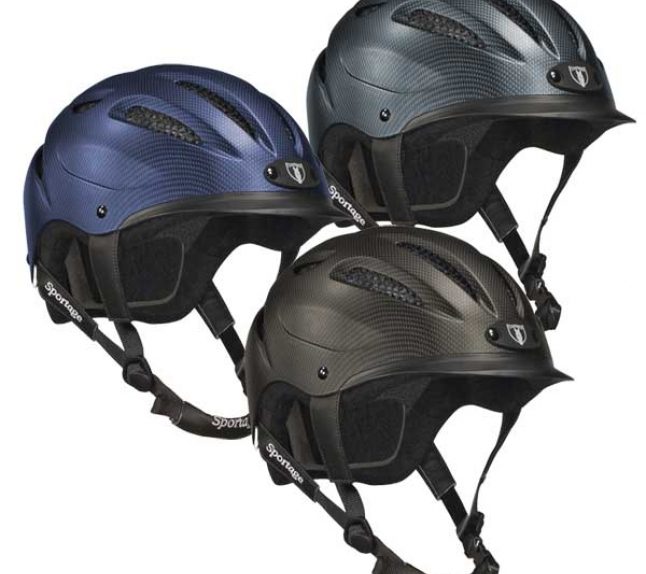Equestrianism encompasses eventing, dressage, reining, show jumping, and vaulting. In these events, riders showcase their horse training and riding abilities by guiding the horse through course obstacles or performing prescribed movements. To initiate these movements and protect both rider and horse, certain equipment is required. Below is a look at eight pieces of essential equestrian equipment.
Helmet
The most important piece of equipment for the rider is the helmet, as accidents can occur regardless of experience and skill. Horses can also get spooked for various reasons, causing the rider to be thrown from the saddle. Whether training for or participating in an official competition, it’s imperative that the rider wears a helmet certified by the Safety Equipment Institute (SEI) and ASTM International.
Helmets certified by these agencies meet strict testing standards for safety and head injury prevention. Helmets should also be properly fitted by professionals and replaced every five years or after they’ve been involved in accidents.
Boots
While a rider’s boots are not as important as their helmet, they still play an important role in rider safety. English or Western riding boots with good tread and a heel of at least 1 inch are preferable, as they keep the feet from becoming tangled in the stirrups.
Other essential rider equipment includes riding gloves, shirts of breathable fabrics, a safety vest, and form-fitting and flexible riding pants.
Saddle
The list of equipment required for the horse is much longer than that for the rider and begins with the most important piece of equipment: the saddle. Positioned on the back of the horse, the saddle is where the rider sits and provides a measure of comfort for the horse. Saddles keep the rider stable and allow them to control the horse more efficiently.
The two primary types of saddles are English and Western, both of which must be fitted to ensure maximum comfort for rider and horse alike. The main difference between the two is that Western saddles are equipped with not only a horn on the front to give the rider more stability, but also other unique parts like the saddle tree and billet strap. They also have narrower knee pads. Depending on the materials, saddles can range in price from a few hundred to thousands of dollars.
Saddle Blanket
Although saddle blankets aren’t required for safety, they do provide an extra layer of comfort for horse and rider alike. The saddle is placed atop the saddle blanket, which is usually made of wool or cotton. Riders often customize the saddle blanket with unique designs to give the horse tack character and make their presentation stand out from others.
Breastplate
An essential piece of equipment, the breastplate helps secure the saddle to the front of the horse, keeping it from sliding off of the horse’s back. It is typically made of leather, nylon, or additional faux-leather materials. The hunting and Western breastplates are the most common examples. The hunting breastplate extends from the saddle down through the horse’s front legs and connects to the girth, a piece of equipment that secures the saddle on both sides around the horse’s waist. The Western breastplate is similar, but includes another strap that runs between the horse’s legs.
Halter
Consisting of a series of straps, the halter is essentially headgear for the horse that allows the rider to guide, lead, or tie up the horse more effectively. The straps go around the horse’s muzzle and fasten behind their ears. Halters are usually made of leather, nylon, or rope and can be adjusted for size via metal rings and latches. They range in price from about $20 to $100.
Reins
Among the several pieces of equipment that help the rider control the horse, the reins arguably play the biggest role. Reins have at least one strap and are held on one end by the rider with the other end connected to the bridle, a guiding piece of equipment that is wrapped around the horse’s face. Like most other equipment, the reins are usually made of either leather or nylon. Rubber reins are a cheaper alternative, however.
Reins can also vary in length and function. Some riders prefer “closed” reins, while others use “double” reins. Closed reins feature a single strap and are preferred for intense riding sessions, whereas double reins include a pair of unattached straps to hold in each hand.
Stirrups
Loops connected to the saddle through which the rider puts their feet, stirrups provide for additional support and riding control. They are usually made of leather and metal and measure 6 inches by 5 inches. Stirrups can be as cheap as $10, while higher-end pairs can cost upwards of $300.
